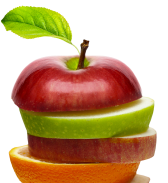Table Of Contents
Have you tried dozens of fad diets, meal plans, and “quick fixes” promised by the internet, but nothing seemed to work? It’s time to say goodbye to restrictive crash diets that destroy your health and embrace a new approach to wellness – circadian rhythm fasting.
This approach taps into the rhythms of your body and helps you align with your internal clock, nourishing your body naturally and intuitively.
Picture this: no more deprivation, strict rules, and unsustainable restrictions; only you, in synch with your body and the world around you, shedding pounds and feeling better just by scheduling your meals within natural daylight hours.
Is circadian fasting just another passing trend, or is it a pathway to wellness and healthy weight loss? Let’s explore.
Also, read – Dare to Transform: 75 Soft Challenge When 75 Hard is Too Much
What is Circadian Rhythm Fasting?
Circadian fasting is a type of intermittent fasting that aligns with your body’s natural biological clock, regulating essential functions like your sleep-wake cycle and digestive processes.
Also known as the “sun cycle diet” or early time-restricted feeding (eTRF), this approach encourages eating your meals during daylight hours and avoiding food when it’s dark. The key principle is synchronizing your eating window with your personal circadian rhythm, based on your typical wake and sleep times.
Morning meals take priority in this system because they capitalize on your body’s natural hormonal patterns. Cortisol, a stress hormone, peaks in the morning, which means your metabolism is also at its highest. Food consumed during this time is more likely to be used as energy rather than stored as fat.
By evening, cortisol levels naturally drop, slowing your metabolism. This means late-night meals have a higher chance of being stored as fat since your body doesn’t need as much energy during rest periods.
Will your eating window change throughout the year as daylight hours fluctuate? It depends on your approach. Some researchers suggest adjusting your eating window seasonally, ranging from six to twelve hours daily, while others maintain a consistent 8-12 hour window year-round. The flexibility of this approach lets you customize it to your lifestyle.

The Sun Cycle Diet: A Natural Approach to Eating
The sun cycle diet represents one of the most natural eating patterns available to us in our modern world. By synchronizing your meals with daylight hours, you’re essentially returning to how humans ate for thousands of years before artificial lighting extended our days.
This approach doesn’t just time your meals—it reconnects you with nature’s rhythm. Your body evolved to process food most efficiently during daylight, when you’re physically active and your digestive enzymes are at peak production. Evening darkness signals your body to shift toward rest and repair rather than digestion.
The beauty of the sun cycle diet lies in its simplicity: eat when it’s light, fast when it’s dark. This basic principle eliminates complex calorie counting and food group restrictions that make other diets so difficult to maintain long-term.
How Morning Meals Boost Metabolism
Starting your day with a nutritious breakfast isn’t just conventional wisdom—it’s backed by science. When you eat earlier in the day, you’re taking advantage of your body’s natural metabolic peak. This early-day metabolism boost helps you process carbohydrates more effectively and maintain stable blood sugar levels throughout the day.
Your digestive system operates on its own circadian schedule, with digestive enzymes and bile production reaching their highest levels in the morning and early afternoon. By consuming most of your calories during this metabolic window, you’re working with your body’s natural processes rather than against them.
Studies show that people who eat their largest meal earlier in the day tend to lose weight more effectively than those who eat the same number of calories later. This happens because your insulin sensitivity is higher in the morning, allowing your cells to use glucose more efficiently rather than storing it as fat.
Circadian Fasting vs. Intermittent Fasting: Key Differences
With so many fasting methods trending, it can be confusing to determine which approach best suits your lifestyle and goals. Let’s compare circadian rhythm fasting vs intermittent fasting to help clarify their unique characteristics.Aspect Circadian Rhythm Fasting Intermittent Fasting Eating Schedule Eat and drink only during the daylight hours, aligning the schedule with your body’s natural clock. Depending on the pattern, cycle between eating and fasting with set time intervals: 16/8, 18/6, 20/4, or full days of fasting. Benefits Boosted metabolism, healthy aging, lower cholesterol levels, improved sleep, reduced risk of chronic diseases, and weight loss. Weight loss, increased energy levels, improved insulin resistance. Fast Length From sunset till sunrise, usually the evening and nighttime. Depending on your fasting pattern, from 6 to 24 hours and even whole days of fasting. Flexibility It is less flexible since the fast is based on daylight hours, not your individual preferences. IF is based on your preferences, you can mix your periods of eating.
While both approaches utilize fasting periods, circadian rhythm fast specifically aligns with your body’s internal clock, making it more biologically synchronized. Traditional intermittent fasting focuses primarily on the length of fasting windows regardless of when they occur during the 24-hour cycle.
The key advantage of circadian fasting is that it works with your body’s natural hormonal fluctuations rather than against them. This can make it feel less restrictive and more sustainable for many people compared to other fasting protocols that might have you hungry during peak daylight hours when your body naturally expects nourishment.
Preparing for Your Circadian Fast
Transitioning to a circadian fasting schedule requires some preparation, especially if you’re used to late-night eating or irregular meal timing. The effectiveness of your fasting experience depends largely on how well you set yourself up for success.
Unlike some intermittent fasting approaches where you can choose your eating window, circadian fasting follows the sun’s schedule. This natural approach might require adjustments to your current habits, but the health benefits make it worthwhile.
Here’s how to prepare effectively for your circadian fast:
Setting Realistic Goals for Your Health Journey
Before diving into circadian fasting, take time to identify your primary motivation. Are you looking to improve metabolic health, reset your eating patterns, or lose weight? Having clear goals helps maintain your commitment when challenges arise.
Set achievable milestones rather than focusing solely on end results. Perhaps your first goal is simply to stop eating after sunset for one week, then gradually adjust your morning meal earlier. Small victories build momentum and create lasting habits.
Remember that health transformations don’t happen overnight. Give yourself grace during the adjustment period and celebrate consistent progress rather than perfection. Each sunrise brings a fresh opportunity to align with your natural rhythms.
Adjusting Your Eating Window to Match Daylight
If you currently eat late dinners or midnight snacks, shifting to a daylight-aligned eating schedule requires gradual adjustment. Begin by moving your final meal of the day 15-30 minutes earlier each day until you’re finishing dinner around sunset.
Similarly, try to have your first meal earlier in the morning to maximize the benefits of your heightened morning metabolism. If you typically skip breakfast, start with something light like fruit or yogurt to signal to your body that the eating window has opened.
Seasonal changes will affect your eating window, especially if you live far from the equator. In winter months with shorter days, you might maintain an 8-10 hour eating window, while summer might allow for a slightly longer 12-hour window. The key is consistency with the sunrise and sunset pattern rather than strict clock times.
Nutrient-Dense Foods for Optimal Results
With a restricted eating window, the quality of your food becomes even more important. Focus on nutrient-rich options that provide sustained energy and satisfaction throughout your day.
Incorporate these food groups into your circadian fasting diet plan:
- Lean proteins (eggs, fish, poultry, legumes) to support muscle maintenance and satiety
- Healthy fats (avocados, nuts, olive oil) for hormone production and brain health
- Complex carbohydrates (oats, sweet potatoes, whole grains) for sustained energy
- Colorful fruits and vegetables for essential vitamins, minerals, and antioxidants
- Fermented foods (yogurt, kefir, sauerkraut) to support gut health
Unlike restrictive diets, circadian fasting doesn’t eliminate food groups. Even moderate treats can be enjoyed within your eating window—preferably earlier in the day when your metabolism is most active.
Also, read – Fair Overview 2024 of What Is Dr Now’s Diet and How It Can Help You Lose Weight
Hydration Strategies During Circadian Fasting
Proper hydration supports every aspect of your circadian fasting journey. Water helps maintain energy levels, supports detoxification processes, and often prevents hunger that’s actually thirst in disguise.
Aim to consume most of your daily water intake during your eating window, tapering off in the evening to prevent sleep disruptions. A good target is at least 2 liters (about 8 cups) daily, with more if you’re physically active or in hot weather.
Morning hydration is particularly important after the overnight fast. Start your day with room temperature water, perhaps with a squeeze of lemon, to gently rehydrate your system and stimulate digestive processes before your first meal.
Listening to Your Body’s Natural Signals
While circadian fasting provides a framework for timing your meals, your individual body’s signals should always take precedence. Pay attention to genuine hunger cues rather than eating by the clock alone.
If you experience lightheadedness, extreme fatigue, or other concerning symptoms during your fast, don’t hesitate to adjust your approach. Some people may need a slightly longer eating window or a small protein-rich snack earlier in the morning.
Remember that circadian fasting should enhance your well-being, not diminish it. Flexibility within the general daylight-aligned framework allows you to create a sustainable practice rather than a rigid regimen you’ll abandon after a few difficult days.
Your Daily Circadian Fasting Schedule
Creating structure around your eating times helps reinforce your circadian rhythm and makes the fasting process more manageable. If your current eating pattern is chaotic or primarily evening-focused, adopting a consistent schedule will be transformative for your health.
Here’s a framework to guide your daily circadian fasting journey:
Morning Routine (6-10 AM): Breaking the Fast
Rise with the sun (or as close as your schedule allows) and begin your day with hydration. Within an hour of waking, enjoy a nutritious breakfast that combines protein, healthy fats, and complex carbohydrates to fuel your day.
Morning is when your metabolism peaks, making it the ideal time for a substantial meal. Consider options like:
- Greek yogurt with berries, nuts, and a drizzle of honey
- Vegetable omelet with whole grain toast
- Overnight oats with protein powder and nut butter
If you’re not usually hungry upon waking, start with something light and have a more substantial meal a bit later in the morning, but aim to consume significant calories before noon.
Daytime Eating (10 AM – 6 PM): Fueling Your Body
During daylight hours, maintain regular meals based on your hunger levels and energy needs. A substantial lunch around midday provides essential fuel for productivity during your afternoon activities.
Some people find that three moderate meals work best, while others prefer two larger meals with small nutrient-dense snacks between them. The key is maintaining steady energy without dramatic blood sugar fluctuations.
Plan your final meal of the day to conclude by sunset or early evening (around 6 PM in most seasons). This meal should be satisfying but not excessively heavy, as your digestive capacity diminishes as evening approaches.
Evening Transition (6-8 PM): Winding Down
As natural light fades, your body begins producing melatonin and preparing for rest. During this transition period, avoid food consumption and begin tapering your activities and stimulation.
If you feel hungry during this window, consider herbal tea, small amounts of water, or a very light vegetable broth if necessary. The goal is to begin the digestive rest period that will continue throughout the night.
Use this time for gentle movement like an evening walk or light stretching, which can help digestion and prepare your body for quality sleep. Dimming lights and reducing screen exposure during this period further supports your natural circadian rhythm.
Overnight Regeneration (8 PM – 6 AM): The Healing Hours
The overnight fasting period is when your body conducts its most essential maintenance and repair work. During these hours, your digestive system rests while cellular regeneration, immune function, and metabolic reset processes activate.
Prioritize quality sleep during this window, aiming for 7-9 hours of uninterrupted rest. Your bedroom should be cool, dark, and quiet to maximize sleep quality and support natural melatonin production.
If you wake during the night, avoid eating or drinking anything other than small sips of water if needed. The longer your digestive system can rest, the more profound the regenerative benefits of your circadian fast will be.
Health Benefits of Aligning With Your Body Clock
Synchronizing your eating schedule with your natural circadian rhythm offers profound health advantages beyond simple weight management. The benefits of this approach are wide-ranging and interconnected, creating comprehensive improvements in your overall wellbeing.
Metabolism Enhancement Through Timed Eating
Circadian rhythm fasting has been shown to optimize metabolic function in multiple ways. Research indicates that this eating pattern increases metabolic rate while reducing excess glucose production and storage.
By eating during your body’s natural metabolic peak and fasting during its natural rest period, you create an environment where calories are more likely to be burned for energy rather than stored as fat. This optimized metabolism can be particularly beneficial if you’ve previously struggled with weight management or metabolic sluggishness.
The metabolic benefits extend to improved insulin sensitivity, allowing your cells to use glucose more efficiently and reducing the insulin spikes that promote fat storage. Over time, this more balanced metabolic function can help maintain healthy body composition and energy levels.
Reducing Disease Risk with Circadian Rhythm Fasting
Beyond weight management, circadian fasting offers protection against several chronic conditions. Studies have linked this eating pattern to reduced risk factors for diabetes and cardiovascular disease through multiple mechanisms.
When you align eating with your circadian rhythm, your body experiences:
- Lower levels of LDL (“bad”) cholesterol
- Reduced triglycerides
- Better blood pressure regulation
- Improved glucose tolerance
- Decreased insulin resistance
These improvements in metabolic markers create a powerful preventative effect against the most common lifestyle-related diseases affecting modern society. By simply shifting when you eat—without necessarily changing what you eat—you can significantly impact your long-term health outlook.
Anti-Inflammatory Effects on Immune Function
Chronic inflammation underlies many health conditions, from arthritis to heart disease. Circadian rhythm fasting has demonstrated significant anti-inflammatory effects by suppressing pro-inflammatory cytokines and promoting regulatory immune responses.
This reduction in systemic inflammation can manifest as:
- Fewer inflammatory symptoms like joint pain or skin conditions
- Improved resilience against seasonal illnesses
- Reduced allergic responses
- Better recovery from exercise and physical stress
The overnight fasting period is particularly valuable for immune regulation, as your body can dedicate resources to immune surveillance and repair rather than continuous digestion.
Digestive Health Improvements
Your digestive system operates on its own circadian schedule, with enzyme production, gut motility, and nutrient absorption all varying throughout the 24-hour cycle. When you eat in alignment with these natural rhythms, your digestion becomes more efficient and comfortable.
Studies show that the gastrointestinal system benefits from regular periods of rest, which circadian fasting provides during the overnight hours. This digestive break allows for:
- Reduced bloating and gas
- Decreased acid reflux symptoms
- More regular bowel movements
- Enhanced nutrient absorption
- Improved gut microbiome diversity
Many people report that digestive discomfort they previously considered normal simply disappears when they adopt circadian rhythm eating patterns.
Cellular Repair and Anti-Aging Effects
The extended overnight fast in circadian rhythm eating triggers cellular maintenance processes that are crucial for longevity and vitality. During these fasting hours, your body activates cellular repair and regeneration mechanisms including autophagy—the process of clearing damaged cellular components.
These repair processes contribute to graceful aging by:
- Reducing oxidative stress and free radical damage
- Improving mitochondrial function for better energy production
- Supporting skin elasticity and repair
- Enhancing cognitive function and neuronal health
- Maintaining muscle mass and function
Rather than seeking anti-aging benefits in expensive creams or supplements, circadian fasting activates your body’s internal rejuvenation systems through simple timing adjustments.
Sleep Quality and Circadian Rhythm
Perhaps one of the most immediately noticeable benefits of circadian fasting is improved sleep quality. When you stop eating several hours before bedtime, your body can transition properly into its rest-and-repair mode instead of focusing on digestion.
This sleep enhancement manifests as:
- Faster time to fall asleep
- Fewer nighttime awakenings
- More consistent deep sleep cycles
- Reduced sleep disruptions like nightmares or restlessness
- More refreshed feeling upon waking
Better sleep then creates a positive feedback loop for your circadian rhythm, making it easier to maintain consistent eating windows and supporting overall metabolic health.
Circadian Fasting Diet Plan for Beginners
If you’re ready to try circadian rhythm fasting, having a structured plan can help ease the transition. This beginner-friendly circadian fasting diet plan provides a framework while allowing flexibility to adapt to your personal preferences and lifestyle.
Week 1: Adjust your eating window gradually
- Days 1-3: Stop eating 2-3 hours before bedtime
- Days 4-7: Aim for breakfast within 1-2 hours of waking and finish dinner by sunset
Week 2: Focus on meal timing and quality
- Establish a consistent eating window (typically 8-12 hours) aligned with daylight
- Make breakfast and lunch your largest meals
- Ensure each meal contains protein, healthy fats, and complex carbohydrates
Week 3: Refine and optimize
- Experiment with meal timing to find what feels best for your energy levels
- Increase water consumption during your eating window
- Pay attention to how different foods affect your satiety and energy
Week 4: Establish consistency
- Maintain your optimized eating window consistently, even on weekends
- Develop strategies for social situations that might challenge your timing
- Continue refining food choices for maximum nutrition and satisfaction
Remember that the goal isn’t rigid perfectionism but consistent alignment with your natural rhythm. Occasional deviations for special events or circumstances won’t derail your progress as long as you return to your circadian eating pattern afterward.
Real Results: Circadian Rhythm Fasting Transformations
The journey of circadian fasting isn’t about overnight transformation but gradual, sustainable change that creates lasting results. When you commit to aligning your eating with your natural body clock, remarkable improvements unfold over time.
Here’s what many people experience as they transition from conventional eating patterns to circadian rhythm fasting:
Before starting: Weight fluctuations, energy crashes throughout the day, frequent hunger and cravings, digestive discomfort, disrupted sleep, and a sense of frustration with previous diet attempts. Many people feel stuck in a cycle of restriction followed by compensatory eating.
After adopting circadian fasting: Steady weight management, consistent energy levels, natural hunger patterns that align with mealtimes, improved digestion, restful sleep, and a newfound sense of control and body awareness. The relationship with food shifts from restriction to nourishment at the right times.
These transformations don’t require extreme measures—just consistent alignment with your body’s natural rhythms. The power of working with your biology rather than against it creates sustainable results that crash diets simply cannot achieve.
Remember that your circadian fasting journey is uniquely yours. Listen to your body, be patient with the process, and trust that aligning with your natural rhythms will guide you toward your optimal health. The sun has been rising and setting for billions of years—there’s profound wisdom in following its lead.
William is from Canada, he is passionate nutrition & wellness writer. William understands that the topic of wellness is still not well understood, so his goal is to enlighten and teach people how to live healthier and happier in their bodies.










I quite like reading an article that can make people think.
Also, thank you for allowing for me to comment!
I’m so thankful for this insightful explanation of circadian rhythm fasting. This article has definitely given me more to think about and consider when exploring fasting options.I’ll be trying this out and sharing it with others.
Hi, Oscar!
Thank you!